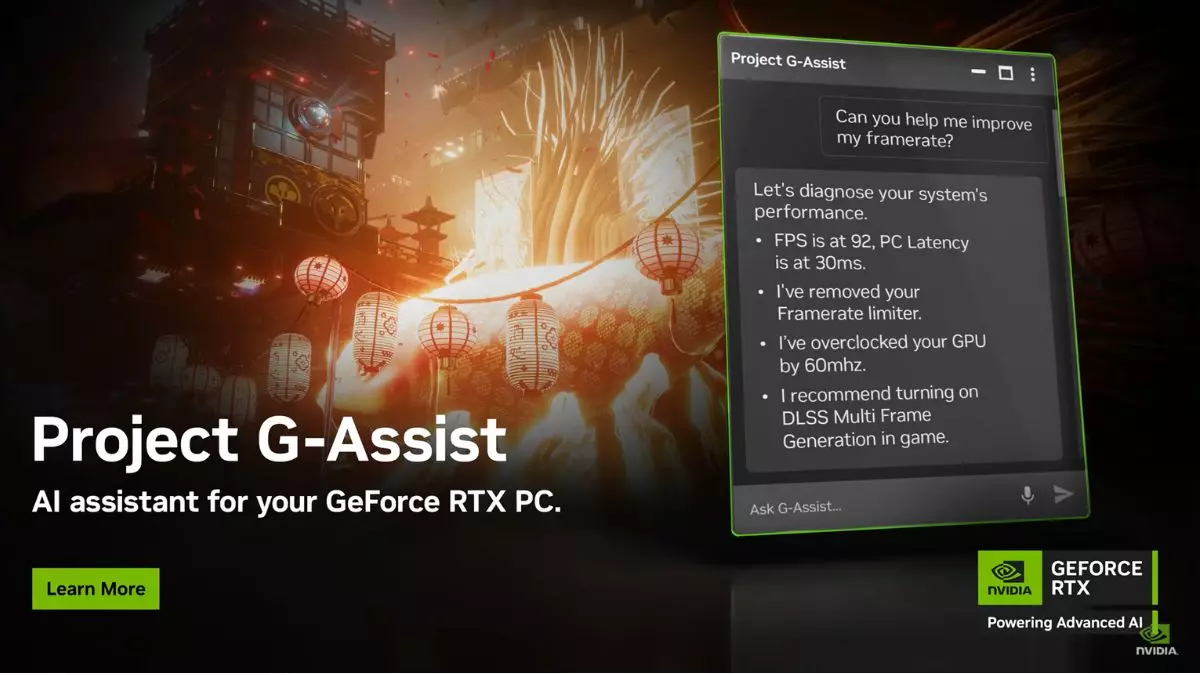Nvidia has boldly stepped into the realm of artificial intelligence with the launch of Project G-Assist, an experimental gaming assistant designed specifically for desktops equipped with GeForce RTX GPUs. This strategic move reveals Nvidia’s commitment to enhancing user experience by allowing gamers to control and optimize their setups with unprecedented ease. However, this release prompts a deeper examination of AI’s role in gaming technology and its potential implications for privacy and autonomy in the digital age.
Understanding the Personal Assistant Paradigm
At its core, Project G-Assist is more than just a chatbot; it is a tailored AI assistant that operates locally, eliminating some major security concerns associated with cloud-based AI solutions. The localized design means that user data remains confined to the device, reducing the risk of surveillance or ownership disputes that often trail behind online services. However, while this appears as a privacy victory, it raises questions: are users inadvertently sacrificing some level of connectivity and collaborative potential for this false sense of security?
Personalized Gaming Experiences: The Pros and Cons
The tool possesses remarkable abilities, from optimizing gaming settings to offering real-time feedback on performance metrics. This attention to detail appeals to gamers who thrive on precision and efficiency. However, the very capabilities that enrich the gaming experience can also become a double-edged sword. As gamers lean more on AI for insights, could they risk losing their intuitive understanding of gameplay mechanics? The question looms: will a reliance on AI create greater dependency and diminish the core skills required for gaming excellence?
Game-Changing Features with a Potential Steep Learning Curve
Equipped with a small language model that interprets natural language commands and utilizes third-party APIs, Project G-Assist differentiates itself with its multifaceted reach. Gamers can provide text or voice inputs, enhancing interactivity. Yet, the experimental nature signifies that this feature is in a nascent state and may require a learning period that many users might find cumbersome. If such technology is to become mainstream, Nvidia must consider the varying comfort levels of its user base regarding AI systems.
The Future of Performance Metrics and Diagnostics
One of the standout attributes of G-Assist lies in its real-time diagnostic capabilities. Gamers can receive insights regarding their hardware’s performance, power efficiency, and temperature management. This form of monitoring is critical, especially in intensive gaming scenarios, but one has to ponder whether Nvidia’s focus on analytics further commodifies the gaming experience. Are we treating gaming as an exhaustive data collection exercise rather than a simple source of enjoyment?
Exclusivity and Expansion Limitations
Currently, G-Assist is confined to English and is not compatible with RTX-powered laptops. This exclusivity raises concerns about accessibility, potentially sidelining a significant segment of the gaming community that resides outside the English-speaking world. As technology continuously evolves, Nvidia must address these limits; an overly exclusive product will ultimately limit its influence and reach across diverse markets.
Project G-Assist represents a bold leap into the realm of AI-enhanced gaming. While its innovative features hold immense appeal, the key to its long-term success will inevitably tie to how well Nvidia can navigate the nuanced balance between empowerment and dependency in gaming. The promise is there; so is the challenge.



Leave a Reply